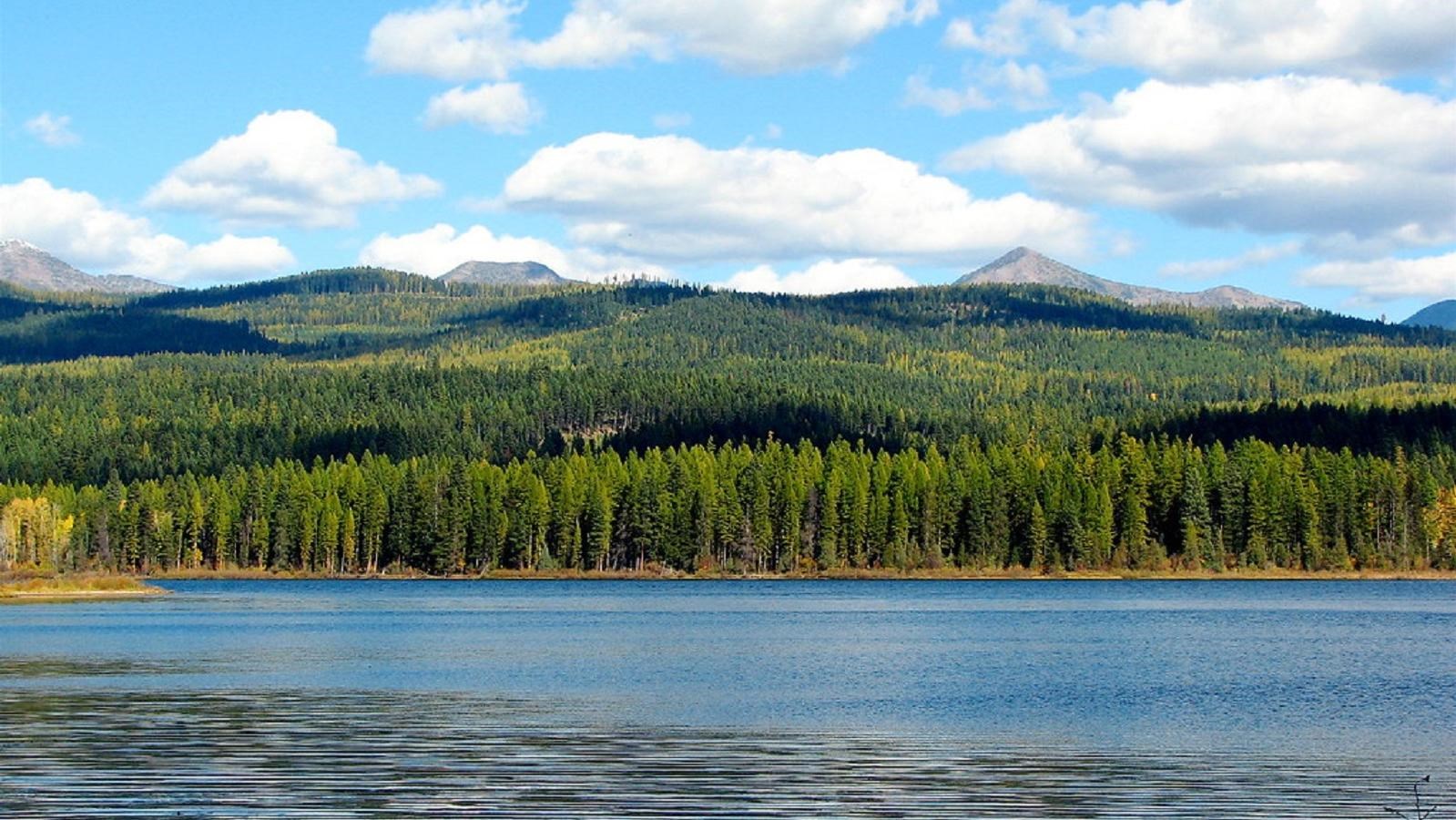Last updated: June 29, 2021
Place
Seeley Lake, Montana

"Camp Paxon, Seeley Lake, Montana" by Bitterroot is licensed under CC BY-ND 2.0
Beach/Water Access, Benches/Seating, Cellular Signal, Food/Drink - Restaurant/Table Service, Trailhead
Lewis and Clark NHT Visitor Centers and Museums
This map shows a range of features associated with the Lewis and Clark National Historic Trail, which commemorates the 1803-1806 Lewis and Clark Expedition. The trail spans a large portion of the North American continent, from the Ohio River in Pittsburgh, Pennsylvania, to the mouth of the Columbia River in Oregon and Washington. The trail is comprised of the historic route of the Lewis and Clark Expedition, an auto tour route, high potential historic sites (shown in black), visitor centers (shown in orange), and pivotal places (shown in green). These features can be selected on the map to reveal additional information. Also shown is a base map displaying state boundaries, cities, rivers, and highways. The map conveys how a significant area of the North American continent was traversed by the Lewis and Clark Expedition and indicates the many places where visitors can learn about their journey and experience the landscape through which they traveled.
Seeley Lake Montana is a full service community located 15 miles upstream of what Capt. Lewis named Werner Creek, now called the Clearwater River.
We are a small community in the God-given green valley on the southwest side of the Crown of the Continent, the largest intact ecosystem in the continental United States. The local scenery and wildlife along Highway 83 is between the world class Glacier and Yellowstone National Parks. Seeley Lake is a never-never land for shutterbugges – they’ll never run out of things to photograph.
Relatively few people hold title to the wildlands surrounding Seeley Lake. Although there is enough private land in the valley to accommodate 10,000 (now 2,000) people, the vast majority of the open space is public, dominated by National Forest Land. The forest is dotted with lakes and wetlands throughout the countryside. Grasslands at the southern end of the valley begin the progression of ecotones through mid-elevation mixed tree species up to subalpine higher mountains.
Our valley is blessed with an incredibly wide spectrum of biologic diversity. Our ecosystem is influenced by the convergence of maritime from the west, some arctic from the north, Great Plains from the east and high plains from the south.
Our wildlife is still wild. The mid to upper portions of the Blackfoot Valley remains one of the few places along the Lewis and Clark National Historic Trail where one may encounter a grizzly bear. Several noted species of wildlife are in the valley, including several top of the food chain varieties (grizzly bears and gray wolfs). Birders think this is the best area within 100 miles. Avifauna ecosystem niches are spread from elevation ranges of 4000 feet to 8000 feet above sea level — grasslands to subalpine environments. If birds move too fast, enjoy a heaven of wild flowers with colors moving throughout the seasons.
Seeley Lake is at the epicenter of wilderness. The Bob Marshall-Great Bear-Scapegoat Wilderness Complex lies just beyond the skyline to the east. The Swan Mountain Wilderness beckons from the northeast. And the Rattlesnake Wilderness touches the southwest corner of the valley. Seeley Lake is only a few hours hike or horseback ride from the wilderness edge. A primitive road from Jocko Pass links us to the Jocko Valley and Flathead Indian Reservation on the western side.
We have plenty of breathtaking experiences.
Our scenery is relaxing while many hikes can be breathtaking. Not all who wonder around are lost. They are just looking for rocks. You can find a different outdoor experience every day of the year. If you return to a special summer place when it has four feet of snow, it will be so different you’ll swear you’ve never been there before.
Enjoy our relaxing hospitality.
Visit like the snow geese enroute to other lands, like the loons that stay as long as they can or our resident ravens.
Our people are very accepting and accommodating, respectful of other opinions and preferences. Most are outdoor enthusiasts sharing experiences rather it be motorheads or traveling by shanks mare. Water based recreation opportunities are on lakes and streams, liquid or frozen. People have been snowmobiling here for 40 years and still haven’t run out of new nooks to explore. Newer residents are overwhelmed with choices of places to explore. Lifetime residents accept the fact they can never do it all.
Visitors have a choice of accommodations ranging from camping in a primitive environment or with modern conveniences. Select a siwash camp under a tree, developed campground, rent a cabin, stay in a motel, or find a vacation rental. Those who prefer brighter lights can visit for the day from Missoula.
Seeley Lake is the regional hub for leisure travel. People here can enjoy the attractions with a one to three hour drive in some of the larger Montana cities — Missoula, Helena, Butte, Great Falls and Kalispell. Those folks are the bulk of our visitors. Those airports can also be starting points for exploring here and beyond Montana.
